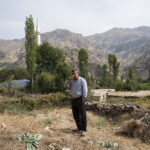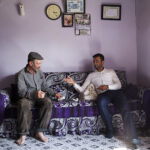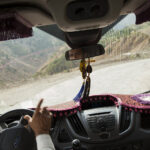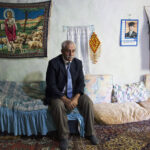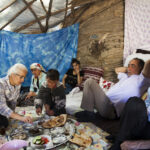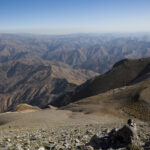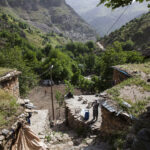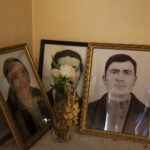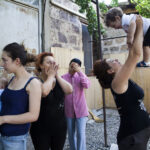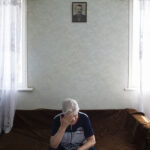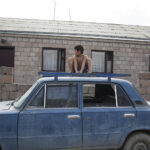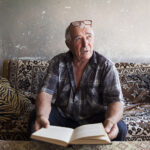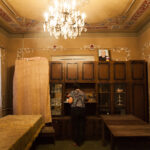FATMA ÇELİK – THE PEOPLE OF SASUN
When the idea of doing a piece on Armenia came to my mind in 2016, it prompted me to research the villages populated by people who had migrated over there from these lands. In the process, I found out that the inhabitants of Apaga village located right across the border were entirely and exclusively Armenians from Sasun – an area that had always attracted me with its geography and history.
Currently a district under the Batman province, Sasun used to encompass a much wider region including Kozluk, Mutki, Kulp and part of Muş in 1915. Traveling to Apaga without any thought to the language barrier I would face, I learned that the village was also home to Ezidis who were, just like Armenians, forced out of Turkey in 1915.
Wandering around the village I realized that only the elderly retained any interest in past. The younger generation had long severed their ties with Turkey… Their former village is still unsafe to them.
Why is it, then, that I’m in pursuit of this story? I don’t have any definite answer to this… All I can say is curiosity. I was curious of the Armenians about whom I heard people back home say “we killed them, sent them away, and they left” and “abundance left these lands with them, if only they could return”.
I wanted to find out if they would want to come back, and how they remembered this place… With this question in mind, I visited Apaga once again a year later. The more I got to know them, the more fascinated I grew with that “intensely beautiful, fruitful and mountainous” landscape they had come from or heard about from their mothers and fathers.
Upon returning to Turkey after those days I spent safe and sound in Apaga, despite knowing the language, I wasn’t immediately able to go to the villages of Mutki (formerly ‘Motkan’), which used to be part of Sasun but is now within Bitlis.
There was no ‘language barrier’, no ‘difference of religion’ between us, but somehow the obstacles looming before me seemed even more insurmountable. I tried to contact villages I wished to visit by obtaining the Governor’s permission and informing the district governorship and gendarmerie. All of the mukhtars (village administrators) kept asking me why I wanted to come to their village and take photos and whether the district governor knew about this or not.
I went to a couple of villages with Sait Mukhtar, who hadn’t asked me any of these questions. Sait Mukhtar and his family still have ties with Armenians; they remain in contact. In the region there are, though few in number, other Kurds and Arabs that, like him, have relations with Armenians. There are no Armenians in Mutki other than Uncle Cezo and his cousin Sabri anymore. Yet many say they used to be relatives with Armenians.
I can’t say that I was able to feel safe while at Mutki in general. I got the sense that people living there also had this same feeling of insecurity. Everybody seemed afraid, burdened by some weight they just couldn’t cast off.
The driver on the way to Xut trying to turn down the Kurdish music playing on the radio and then relaxing and raising the volume once he saw me tapping along with the beat… The potter lady in Xut anxiously asking whether she would end up in jail because I had taken her photograph…
The uncle who blurted out, brimming with the desire to talk, that his grandfather Reşo was the one who had taught pottery to the entire village, but who then fell silent on the subject after being warned by his friends… And me, unable to tell whom to talk to and how, and in what better way to go about taking photographs…


